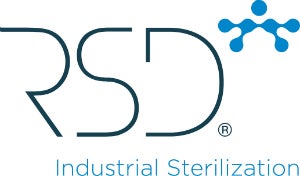Gas mixtures for Industrial EO Sterilisation

Ethylene oxide (EO or EtO) cycles are typically based on the control of humidity, flow, pressure, temperature and EO concentration time, the latter of which is an important factor (usually set between 400-800mg / l) and is directly linked to the dwell time, impacting the production cost.
The higher the EO concentration is, the less the dwell time is. However, if the EO consumption increases, it makes the cycle more expensive, which is why each product that has to be sterilised should be correctly validated, optimising the cost and maintaining safe operations.
Two kinds of Ethylene Oxide mixtures can be found on the market:
• EO cylinders filled with 100% EO and pressurised with nitrogen (N2) to keep constant pressure.
• EO cylinders filled with a mixture of X% of EO + X% of carbon dioxide (CO2). As the EO and the CO2 are miscible, they can be mixed to reach the desired concentration.
Some sterilisation plants use low Ethylene Oxide concentration drums, believing it is not explosive or toxic. Such a low concentration used to be between 10% and 30% of Ethylene Oxide mixed with CO2. It is wrong to believe low Ethylene Oxide concentration mixtures are not dangerous.
It has been proven by several gas companies that EO mixtures begin to be potentially explosive from 8,5% in volume with 91,5% CO2. From this EO concentration, the equipment should meet ATEX (2014 / 34 / UE) normative, NEC 500 / 505 (US) or any other regulation for installation exposed to explosive risks. In other words, the equipment cannot be a “low-cost product”, as safety aspects should be seriously taken into account.
The common EO mixture for ethylene oxide industrial sterilisation
For industrial Ethylene Oxide sterilisation, the most used EO mixture is 100% EO + N2. Working with such a mixture means that the pressure inside the steriliser is lower than with any other EtO mixture. The high EO concentration used makes the gas injection short, so the steriliser can be designed and manufactured to work only with negative pressure. There are no potential EO leaks to the atmosphere and the pressure vessel is simplified (cost-saving).
Another advantage is the pressure inside the cylinders. Using 100% EtO mixture pressurised with N2, the pressure was around 5-6b, depending on the temperature and the demand. However, 10% EO + 90% CO2 mixture means the pressure drum will be at around 50b, making the purge operations and especially mixture vaporisation complicated and potentially dangerous, due to high pressure (most of the piping in the gas room should withstand such a pressure). The EO concentration with a 100% EO + N2 mixture remains very stable. On the other hand, if an EtO + CO2 mixture is used, it is the CO2 that supplies the pressure to the liquid mixture. When the cylinder is full, the EO concentration is lower than when the cylinder is almost empty.
Finally, the environmental impact is lower using a Pure EtO + Nitrogen compared to any other EtO + CO2 mixture. Taking into account the international regulations that emissions become more and more strict, it is an important aspect to consider.
As experts in Ethylene Oxide sterilisation process and equipment for pharmaceutical and Medical Device companies, we offer a wide range of services. If you need help improving EtO sterilisation process or equipment, or if you are considering installing an EtO chamber, please fill out the enquiry form attached to this page.

